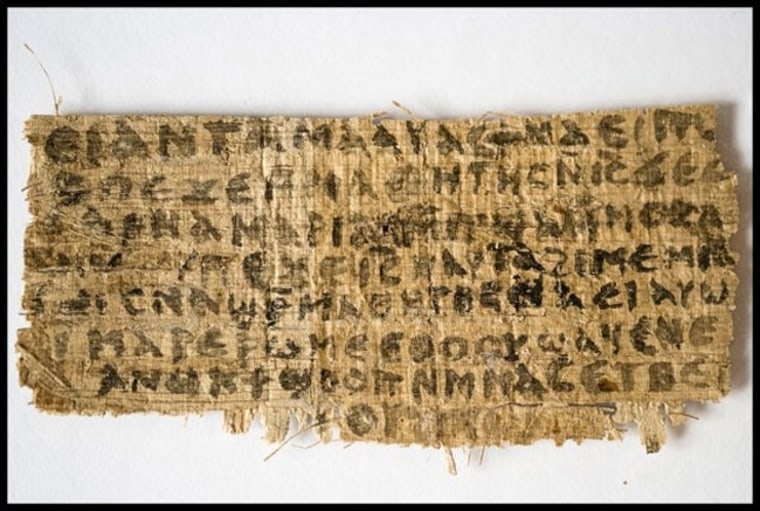The truth may be finally emerging about the "Gospel of Jesus's Wife," a highly controversial papyrus suggesting that some people, in ancient times, believed Jesus was married to Mary Magdalene.
Debate about the credibility of the "gospel" began as soon as Harvard University professor Karen King reported her discovery of the papyrus in September 2012. Written in Coptic (an Egyptian language), the papyrus fragment contains a translated line that reads, "Jesus said to them, 'My wife …'" and also refers to a "Mary," possibly Mary Magdalene.

Analysis of the papyrus suggested the papyrus dates back around 1,200 years while the ink is of a type that could have been created at that time. These findings have led King to support the text's authenticity. However over the past year many scholars have come to the conclusion that the papyrus is a modern-day forgery.
The current owner of the papyrus has insisted on remaining anonymous, claiming that he bought the Gospel of Jesus's Wife, along with other Coptic texts, in 1999 from a man named Hans-Ulrich Laukamp. This person, in turn, got it from Potsdam, in what was East Germany, in 1963, the owner said.
Laukamp died in 2002, and the claim that he owned the text has been strongly disputed. Over the past few months, new documents have been found that not only reconstruct Laukamp's life in greater detail, but also provide a new way to check the anonymous owner's story. If Laukamp didn't own the papyrus and the anonymous owner has not been truthful, then further doubt would be cast on the papyrus' authenticity.

One important find, which indicates the Gospel of Jesus's Wife is a fake, was made last year by Christian Askeland, a research associate with the Institute for Septuagint and Biblical Research in Wuppertal, Germany. He examined a second Coptic papyrus containing part of the Gospel of John, which the anonymous owner of the Gospel of Jesus's Wife had also given to Harvard.
Askeland found that the text and line breaks are identical to those of another papyrus, published in a 1924 book. That second papyrus was written in a dialect of Coptic called Lycopolitan, which went extinct around 1,500 years ago. Askeland concluded that the John papyrus is a forgery. Furthermore, it shares other features with the Gospel of Jesus's Wife, Askeland said, suggesting both are forgeries.
Related: 'Gospel of Jesus's Wife' Looks More and More Like a Fake
A number of scholars have noted that the Coptic writing in the Gospel of Jesus's Wife is similar to another early Christian text called the "Gospel of Thomas," even including a modern-day typo made in a 2002 edition of the Gospel of Thomas that is available for free online. That typo indicates the forgers copied from this modern-day text. King disputed this assertion in 2014, saying that ancient scribes made grammatical errors similar to the modern-day typo.
King and communications staff at Harvard Divinity School have not responded to repeated requests for comment.
This is a condensed version of a report from Live Science. Read the full report. Follow Live Science @livescience, Facebook & Google+.
